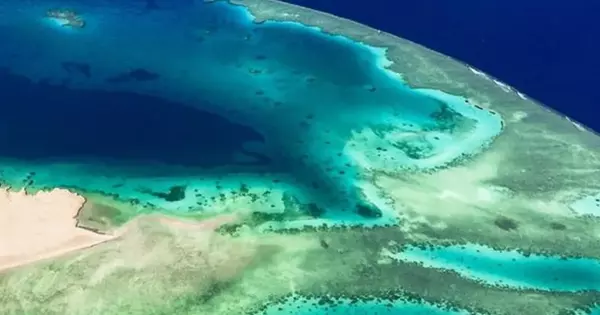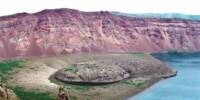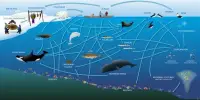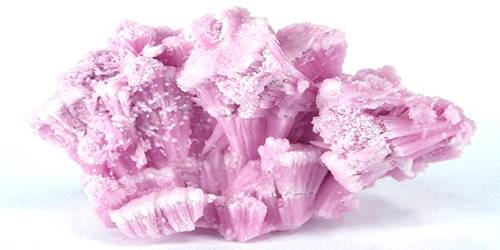A brine pool, also known as an underwater or brine lake, is a volume of brine collected in a seafloor depression. The pools are dense bodies of water with salinities three to eight times higher than the surrounding ocean. Brine pools are commonly found beneath polar sea ice and in the deep ocean.
Researchers from the University of Miami’s (UM) Rosenstiel School of Marine and Atmospheric Science recently discovered rare deep-sea brine pools in the Gulf of Aqaba, a northern extension of the Red Sea. These salty underwater lakes hold secrets about how Earth’s oceans formed millions of years ago, as well as clues to life on other planets.
Sam Purkis, professor and chair of the UM Department of Marine Geosciences, and his team made their discovery using a remotely operated underwater vehicle (ROV) on the OceanXplorer, a highly equipped research vessel capable of exploring the most inaccessible places on Earth, in collaboration with OceanX.
It will be difficult to determine whether alien planets can host any living beings until we understand the limits of life on Earth. Our discovery of a rich community of microbes that survive in extreme environments can help trace the limits of life on Earth and can be applied to the search for life elsewhere in our solar system and beyond.
Prof. Sam Purkis
“It will be difficult to determine whether alien planets can host any living beings until we understand the limits of life on Earth,” Purkis said. “Our discovery of a rich community of microbes that survive in extreme environments can help trace the limits of life on Earth and can be applied to the search for life elsewhere in our solar system and beyond,” says the study’s lead author.
Brine pools are one of the most extreme environments on Earth, yet despite their high salinity, exotic chemistry, and complete lack of oxygen, these pools are teeming with life. We have previously isolated bioactive molecules with potential anticancer properties from brine pool microbes in the Red Sea.
Brine pools are sometimes referred to as “lakes” on the sea floor because the dense brine does not easily mix with the overlying seawater, resulting in a distinct interface between water masses. The pools range in size from less than one square metre (11 square feet) to as much as 120 square kilometers (46 square miles) in the Orca Basin. The high salinity increases the density of the brine, which creates a pool surface and shoreline. Some minerals, such as baryte (barium sulfate), precipitate out of the brine and form crystalline crusts around the pool’s edge, depending on concentration.

In the latest discovery, researchers have found a deadly pool at the bottom of the Red Sea that practically kills every creature which swims inside it. According to a Live Science report, researchers from the University of Miami have discovered a “brine pool” that instantly kills or paralyses anything that swims into it. Further, according to recent research, the rare deep-sea brine pools found in the Red Sea may provide information on long-term environmental changes in the area and potentially provide insight into the beginnings of life on Earth.
The study, which was published in Nature Communications, is the first to identify brine pools in the Gulf of Aqaba. “We were extremely fortunate,” Purkis said. “The discovery occurred in the final five minutes of the ten-hour ROV dive that we were able to devote to this project.”
These extremely salty, zero oxygen pools near the coast preserve information on tsunamis, flashfloods, and earthquakes that occurred thousands of years ago in the Gulf of Aqaba. Many faults and fractures in the seabed are associated with the region’s tectonics in this area of the Gulf of Aqaba.
Earlier this year, Purkis and team discovered evidence of a 500-year-old submarine landslide that likely spawned a sizable tsunami in the region, that could have implications for coastline development in Egypt and Saudi Arabia.
















